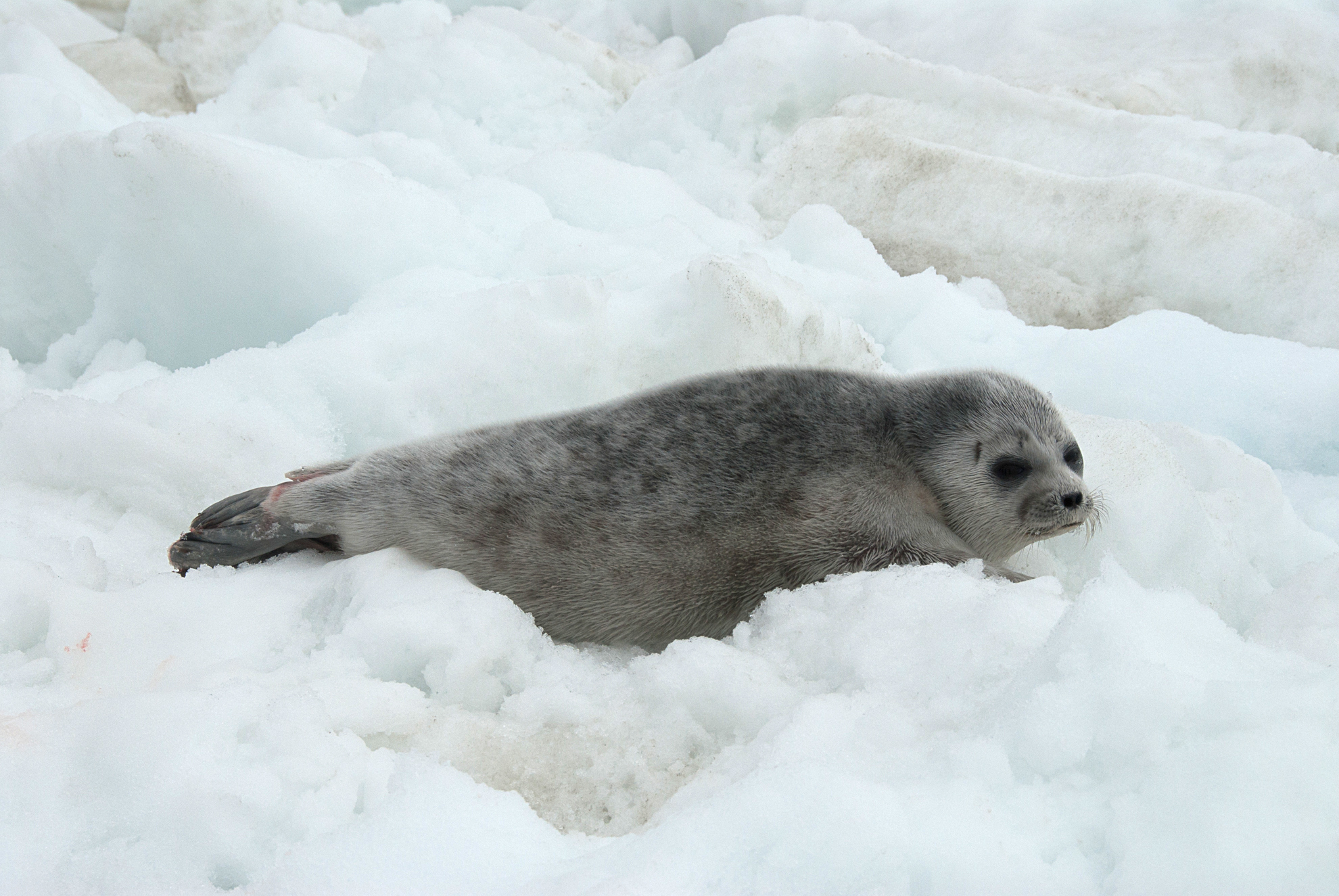A new legal agreement sets a timeline for protecting ice-seal habitat in Alaska
The Trump administration will designate critical habitat for endangered seals in Alaska within a year, to settle a lawsuit brought by environmentalists.

The federal government will submit a proposal within a year for designated critical habitat to protect ice-dependent Alaska seals threatened by Arctic climate change, under a legal agreement reached between the Trump administration and an environmental group.
The agreement, filed Nov. 25 in U.S. District Court in Anchorage, settles a lawsuit filed by the Center for Biological Diversity against the Commerce Secretary Wilbur Ross, whose department includes the National Oceanic and Atmospheric Administration. The center accused NOAA of illegally delaying designation of critical habitat for ringed seals and bearded seals. Both species’ Alaska populations are listed as threatened under the Endangered Species, with Arctic climate change considered the key threat.
“Ice seals’ homes are rapidly melting away, so it’s good to see the Trump administration pledge to protect their habitat. But it shouldn’t take a lawsuit to force officials to follow the law,” Emily Jeffers, a Center for Biological Diversity staff attorney, said in a statement. “Ringed and bearded seals need our help to survive an Arctic that’s heating up at twice the global rate. They need habitat protections now, and they need us to quickly address climate change.”
Julie Speegle, a NOAA Fisheries Service spokeswoman in Alaska, said the agency is now on a timeline to complete the process designating critical habitat.
“We intend to uphold our commitment to submit the Federal Register proposed determinations concerning critical habitat for these ice seal species by September 15, 2020, and depending on those determinations, to submit final determinations by September 15, 2021, as stated in the agreement,” she said by email.
The agreement does not preclude further legal challenges over the substance of the critical habitat designation.
Ringed seals and bearded seals use floating sea ice to give birth to and nurse their young and rest in between dives underwater in search for food. Ringed seals also depend on snow atop that ice; they build lairs in the piled-up snow to shelter their pups and keep them warm and protected from predators, chiefly polar bears. The populations are deemed threatened because of warming-related losses in sea ice and, in the case of ringed seals, a shift in precipitation from snow to rain.
Since last year, ringed, bearded and spotted seals have also been the victims of a large die-off in the Chukchi and Bering Seas — marine areas where water temperatures have been much warmer than normal. NOAA has classified the die-off as an unusual mortality event justifying special attention and scientific investigation.
The Nov. 25 agreement between the Center for Biological Diversity and the Trump administration is the latest chapter in a long legal and administrative fight over protections for seals dependent on Arctic sea ice. That legal jousting, which ultimately went up to the U.S. Supreme Court, started in 2007, when the Center for Biological Diversity petitioned NOAA for Endangered Species Act protections for the ribbon seal, a different species of ice-dependent seal, and followed the petition with a notice of intent to sue. NOAA responded by launching reviews of all four species of ice seals found in Arctic Alaska — spotted, ringed and bearded, as well as ribbon. The decisions that followed listed the Beringian populations of ringed and bearded seals as endangered.
Separate lower-court rulings overturned the ribbon and bearded seal listings, but those listings were reinstated by rulings last year from the 9th Circuit Court of Appeals. Oil industry groups, the North Slope Borough, the state of Alaska and others sought to have the Supreme Court overturn the bearded seal listing, but the high court in early 2018 let the 9th Circuit ruling stand.
The federal government is legally required to designate critical habitat for populations listed under the Endangered Species Act. But progress toward establishing those critical habitat designations has also been stalled by the various court challenges.
NOAA in 2014 proposed designating more than 226 million acres of ringed seal critical habitat, a region encompassing the northern Bering Sea and all of the Alaska portions of the Chukchi and Beaufort seas.
The area, more than twice the size of California, would have been the biggest designated critical habitat for any population listed under the Endangered Species Act.
NOAA has also listed the Okhotsk, Baltic and Ladoga ringed and bearded seal populations as threatened or endangered, but the Nov. 25 settlement does not affect those non-U.S. populations.